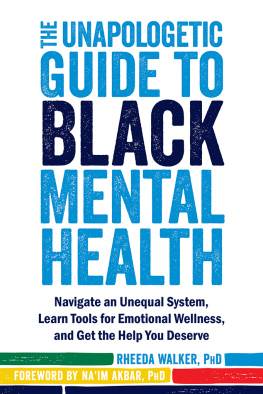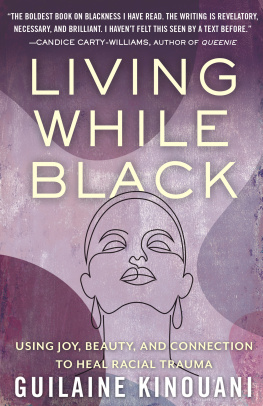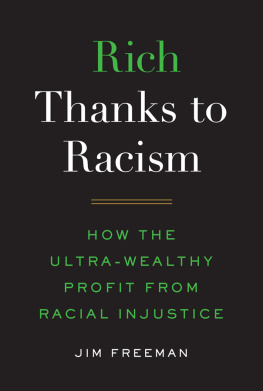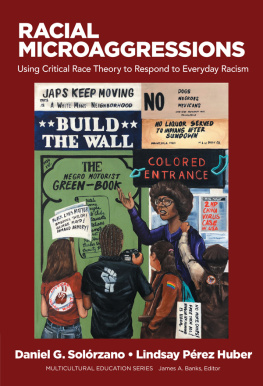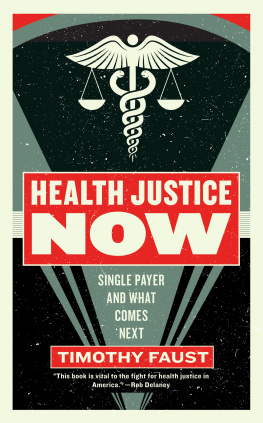Contents
List of Figures
Guide
Pagebreaks of the print version
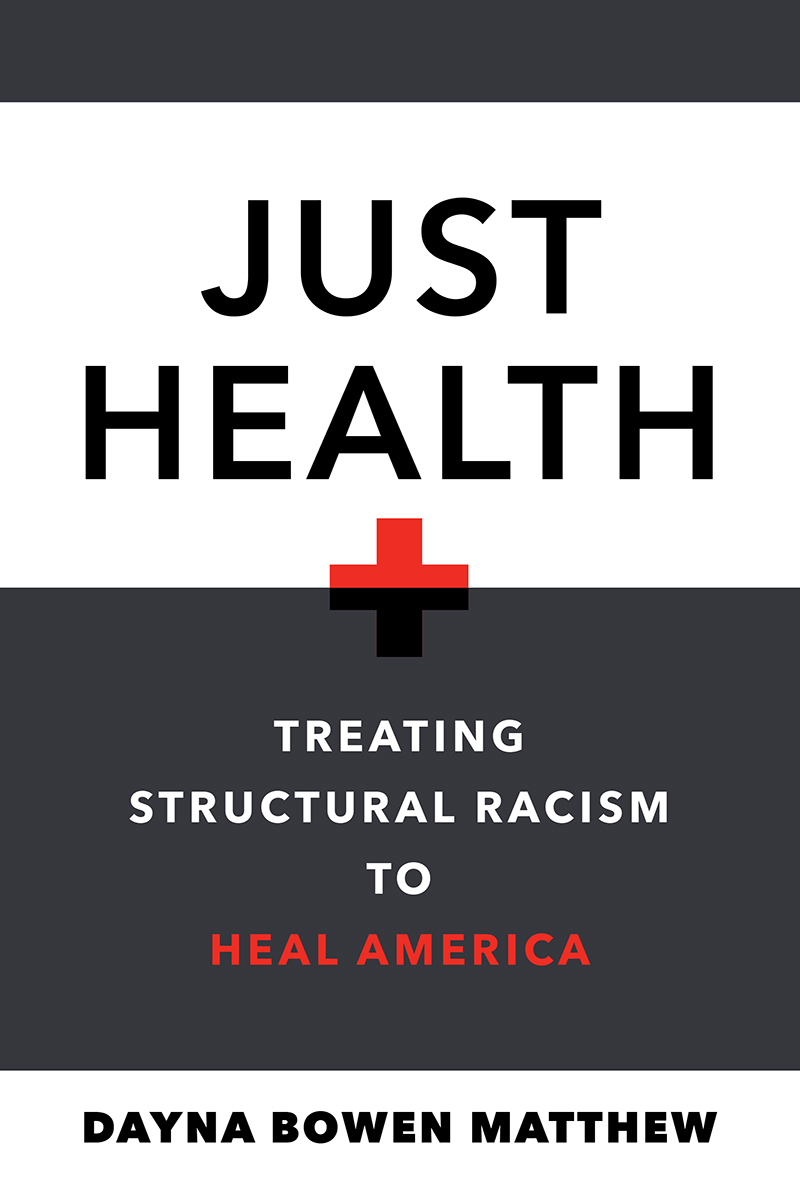
JUST HEALTH
JUST HEALTH

TREATING STRUCTURAL RACISM TO HEAL AMERICA
DAYNA BOWEN MATTHEW

NEW YORK UNIVERSITY PRESS
New York
NEW YORK UNIVERSITY PRESS
New York
www.nyupress.org
2022 by New York University
All rights reserved
References to internet websites (URLs) were accurate at the time of writing. Neither the author nor New York University Press is responsible for URLs that may have expired or changed since the manuscript was prepared.
Library of Congress Cataloging-in-Publication Data
Names: Matthew, Dayna Bowen, author.
Title: Just health : treating structural racism to heal America / Dayna Bowen Matthew.
Description: New York : New York University Press, [2022] | Includes bibliographical references and index.
Identifiers: LCCN 2021013294 | ISBN 9781479802661 (hardback) | ISBN 9781479802692 (ebook) | ISBN 9781479802685 (ebook other)
Subjects: LCSH: MinoritiesMedical careUnited States. | Discrimination in medical careUnited States. | Social medicine. | African AmericansHealth and hygieneSocial aspects.
Classification: LCC RA563.M56 M28 2022 | DDC 362.1089dc23
LC record available at https://lccn.loc.gov/2021013294
New York University Press books are printed on acid-free paper, and their binding materials are chosen for strength and durability. We strive to use environmentally responsible suppliers and materials to the greatest extent possible in publishing our books.
Manufactured in the United States of America
10 9 8 7 6 5 4 3 2 1
Also available as an ebook
CONTENTS
INTRODUCTION
Well, if one really wishes to know how justice is administered in a country, one does not question the policemen, the lawyers, the judges, or the protected members of the middle class. One goes to the unprotectedthose, precisely, who need the laws protection the mostand listens to their testimony.
James Baldwin, No Name in the Street (1972)
My father died at age forty-nine. He was an African American man, and therefore, his untimely death was not nearly as extraordinary as he was. I begin this book with his story to illustrate how structural inequality and, more specifically, structural racism work annually to kill tens of thousands of Black, Native, and Latinx people in our country well before their time. Vincent Edward Bowen Jr. was my intelligent, hardworking, and charming Daddy. I had the benefit of experiencing his love, wisdom, protection, and counsel only for the first two decades of my life. He was an extrovert who lit up every room. He was my most trusted mentor. Yet I lost him before I completed my sophomore year of college, before I married, before I gave birth to his three grandchildren, and before I started my career. Most importantly for the purpose of this book, I lost my father before he could amass any property or wealth for me to inherit from his years of herculean labor born of his determination to achieve the American Dream.
His premature death cut short any chance for his family to realize the return on the considerable investments he made in going to college at night to become an entrepreneur and a residential real estate appraiser, or the years he toiled as a New York City subway motorman to finance his familys climb out of poverty. Although, thankfully, he did leave my mother enough to live on until her deathalso prematureat age sixty-one, my family lost Vincent before my brother and I could avoid being counted among the ranks of families headed by a Black, single, low-wage-earning woman. To be absolutely clear: the facts of my familys story defy the myth that millions of other Black Americans share this all-too-familiar position because of a family breakdown or failure of personal responsibility.
My parents met in church and married young, before my brother and I were born. Both my parents also had two parents at home. Each of these individuals held multiple jobs so that they could pay taxes, pay bills, and provide the best housing that was available for their families in segregated neighborhoods from Brunswick, Georgia, to the South Bronx in New York City, where I grew up. Yet all except one of my parents and grandparents were dead before I turned thirty. Some might point to my fathers overweight frame or his high blood pressure as the comorbidities that shortened his life. These factors certainly were not irrelevant. But the resounding message of this book is that structural inequality, not individual deficits, was the primary factor that contributed to my fathers death. More precisely, I aim to show that structural racism, which is the structural inequality that results from racial discrimination, was the primary cause of my fathers early demise. But my father wasnt the only casualty of structural racism; the same racism caused the early deaths of most of my fathers relatives and all my fathers friends that I knew growing up. Some researchers estimate that up to 25 percent of deaths annually are directly attributable to income inequality. The best estimate is that structural inequality accounts for more American deaths each year than does diabetes or the flu; in 2000, an estimated 119,000 Americans lives were lost because of income inequality.
Afflictionsof Structural Inequality: Poverty, Prejudice, and Poor Health
In the pages that follow, I will disabuse the fallacious notion that my fathers geneticsindeed that any individuals biological comorbiditiesare the most important contributors to the disproportionately high morbidity and mortality that poor and minority populations suffer in America. I will recount the evidence showing that, instead, the systemically inequitable social comorbidities that our nation tolerates are the primary drivers of these disparities. Epidemiologists define comorbidity as the different conditions present that adversely affect a populations health outcomes. In this book, I explain the most dangerous and deadly comorbidity of allstructural inequalityand how it does deadly damage to the lives of all Americans. By structural inequality, I mean the deliberately and unintentionally constructed disruptions that a society uses to systematically displace humans from standing on equal footing in life. This inequality is structural because it operates through enduring societal institutions to relegate some groups to an inferior status and elevate other groups to superiority solely because of their group membership and without regard to their individuality or shared humanity.
Structural inequality organizes preferential treatment on a large-enough scale and powerful-enough scope so as to operate as a virtually inexorable guarantee of predictably stratified social outcomes that reflect predetermined hierarchies, often for generations. In America, structural inequality sorts people by numerous metrics; this book is concerned with structural inequality based on socioeconomic status and race. Not only did this structural inequality contribute to my fathers poor health and kill him before his time, but it is also killing the American Dream for us all. Structural inequality works in at least two ways. Lets examine them.


